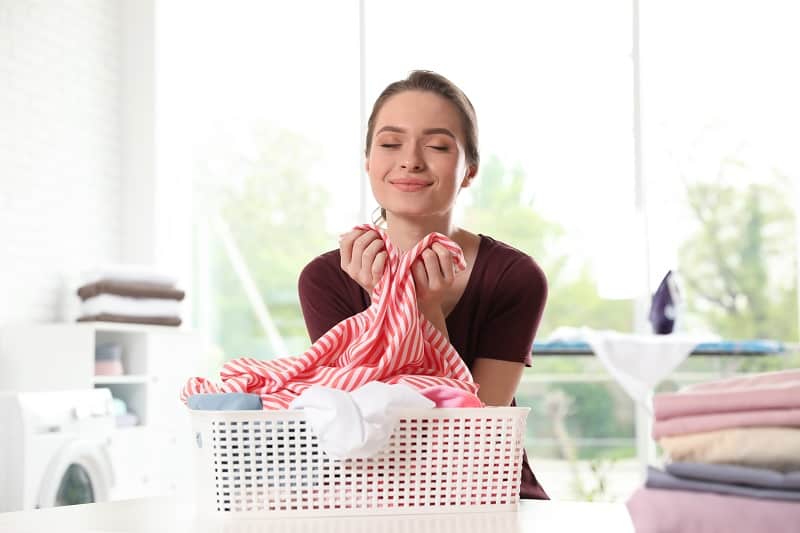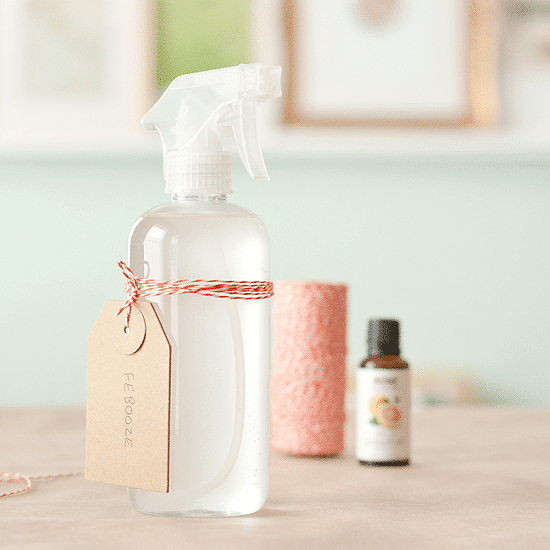Do you ever wish you could refresh your clothes, furniture, or linens without washing them every time they start to smell stale or dusty? Well, with a DIY fabric refresh spray, you can!
This affordable option is easy to create and helps you avoid the harsh chemicals often found in store-bought alternatives.
The purpose of fabric refresh spray is to freshen up your clothes or furniture after being around pets. Spraying your fabrics with distilled water, rubbing alcohol, and your favorite essential oil can help neutralize pet odors and leave your textiles smelling fresh and clean.
Whether you have pets, kids, or a busy lifestyle, fabrics can quickly become soiled or develop unpleasant odors.
Rather than washing them every time they start to smell, a few spritzes of fabric refresh spray can help keep them smelling clean and fresh.
In this post, bubble it cleaning as a local family cleaning business will guide you to explore the purpose of a fabric refresh spray and how to create one using natural ingredients and your favorite essential oils at home.
We will also give you a PRO tip for creating and using the fabric refresh spray, so read until the end.
List the necessary ingredients and materials to make a DIY spray.
We’ll go over the necessary ingredients and materials you need to make your fabric refresh spray at home, including some unique components that our experts at Bubble it Cleaning always use.
Distilled water
Use it instead of tap water to prevent any impurities from affecting the scent or effectiveness of the spray.
Rubbing alcohol
Helps eliminate odors and stains from the fabric but be careful not to use too much as it can damage delicate fabrics.
Essential oils
Choose your favorite essential oils to add a fresh scent to the spray. Popular options include lavender, peppermint, lemon, and eucalyptus.
Spray bottle
Use a glass bottle instead of a plastic one to prevent chemicals from leaching into the spray.
Witch hazel (Pro Ingredient)
You’d love to add witch hazel to the spray to provide a gentler alternative to rubbing alcohol.
Baking soda (Pro Ingredient)
A unique component that only experts might use is baking soda, which can help to neutralize odors and stains in fabrics.
Lemon juice (Pro Ingredient)
We might also use lemon juice to help brighten and whiten fabrics.
Combining these ingredients in the right proportions allows you to create a fabric refresh spray that works great for freshening up your fabrics in between washes.
The ingredients proportions of a DIY fabric refresh spray
Now it’s time to go through the process of creating the DIY spray and the exact proportions of each material.
After you’ve gathered your ingredients and materials as mentioned before and don’t forget our PRO additional ingredients like witch hazel, baking soda, and lemon juice. Now let’s discuss the proportions :
- 1 cup of distilled water
- 1/4 cup of rubbing alcohol
- 1/4 cup of witch hazel
- 10-20 drops of your favorite essential oils
- One tablespoon baking soda
- 1/4 cup of lemon juice
Steps to create a DIY fabric refresher spray and the cautions to take
Step 1:
Mix the ingredients – in a glass spray bottle, mix water with alcohol and witch hazel. Add 10-20 drops of your essential oils, depending on how strong you want the fresh scent.
For baking soda, add one tablespoon to the mix. And then add the Lemon Juice.
Step 2:
Shake well – shake the bottle well to combine all the ingredients.
Step 3:
You are ready to go! Use as needed when your fabrics start to smell stale or develop stains; spray the fabric refresher on them and let them air dry.
Here are some cautions to keep in mind when making and using a fabric refresh spray:
1) Test on a small area first – before using the fabric, refreshing spray on larger areas; test it on a small, inconspicuous area of the fabric to ensure it doesn’t cause any discoloration or damage.
2) Avoid spraying delicate fabrics – some fabrics may be too delicate for a fabric refresh spray, so check the fabric label before using them.
3) Store the spray safely – keep the spray bottle away from heat, flames, and direct sunlight to prevent potential hazards.
4) Be aware of allergic reactions – some people may be allergic to certain essential oils, so test the spray on a small area of skin before using it on fabrics.
The right way to use a fabric refresh spray on different types of fabric
After making your DIY fabric spray, Now it’s time to understand that different types of fabrics require different application methods for the spray.
As experts in House cleaning in Utah. We’ll tell you how to use the spray for each fabric type.
Clothing
when using a fabric refresh spray on clothing, hold the spray bottle about 6 inches away from the fabric and spritz lightly.
Avoid over-saturating the fabric and focus on areas that trap odors, like underarms and collars.
Bedding
for bedding, spray the fabric refresh spray lightly over the entire surface of the bedspread, comforter, or pillows. Allow it to air dry before using the bedding again.
Furniture
when using a fabric refresh spray on furniture, spray it lightly over the surface of the upholstery or cushion. Allow it to air dry before sitting on or using the furniture again.
Curtains
Hold the spray bottle about 6 inches away from the fabric and spritz lightly. Avoid over-saturating the fabric and focus on areas that trap odors, like near the bottom hem.
Towels
When using a fabric refresh spray on towels, spray it lightly over the entire surface of the towel. Allow it to air dry before using the towel again.
When using a fabric refresh spray, make sure to follow the proportions of the previously discussed components carefully to avoid any potential risks.
Also, make sure to test the spray on a small, inconspicuous area of the fabric before using it on larger areas, especially with delicate fabrics.
Carpets
When using a fabric refresher spray on carpets, pay attention to high-traffic areas or places where odors are more prevalent.
Pro Tip from Bubble It Cleaning Services:
To maximize the effectiveness of your homemade fabric refresher spray using essential oils, we recommend following these steps:
Customize the essential oils: Different essential oils have varying properties and scents. Consider the specific needs of your home when choosing oils. For example, lavender essential oil is known for its calming properties and can help create relaxing ambiance, while lemon or citrus oils have refreshing and uplifting scents.
Regular maintenance: Incorporate this homemade refresher into your regular cleaning routine to keep your home smelling pleasant and fresh. Using it once every few weeks, or as needed, can help prevent odors from lingering and maintain a clean environment.
Remember, proper dusting, vacuuming before applying the refresher to remove loose dirt and debris. Always spot test in small areas to assure it won’t left any damages.
Lastly enjoy the benefits of a naturally refreshed home!









